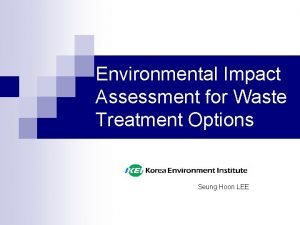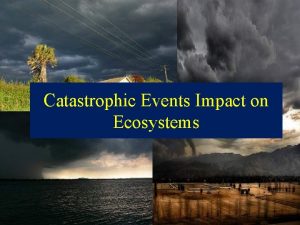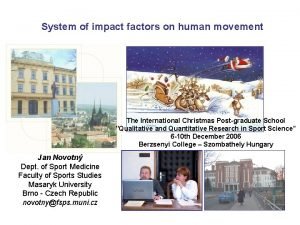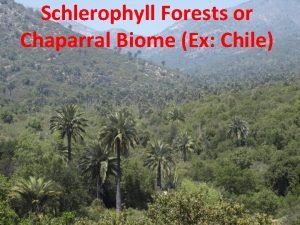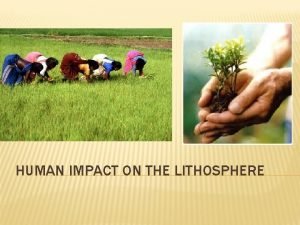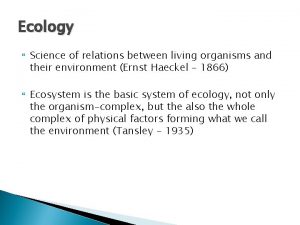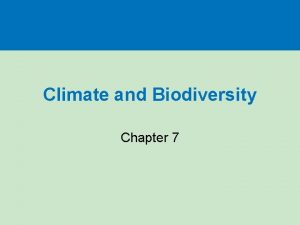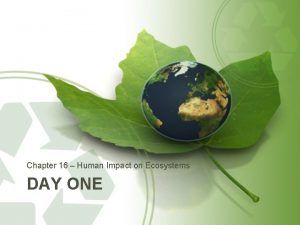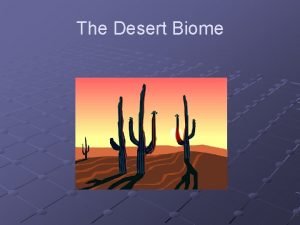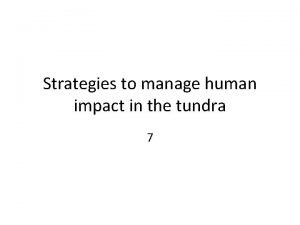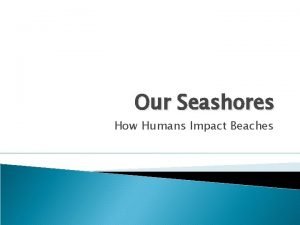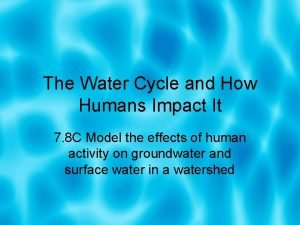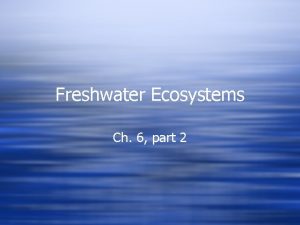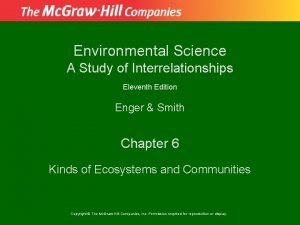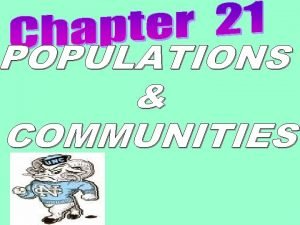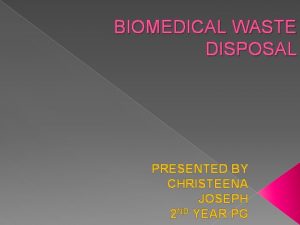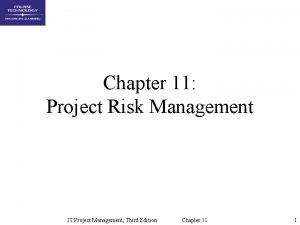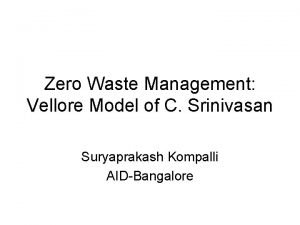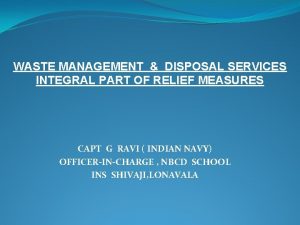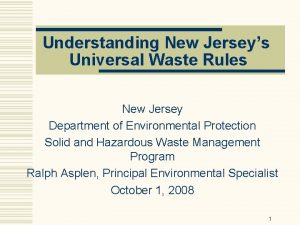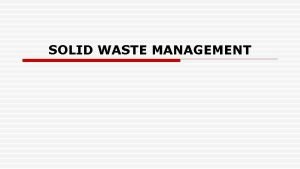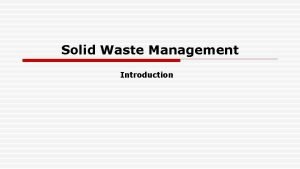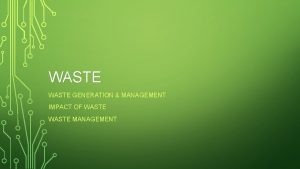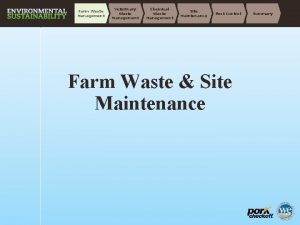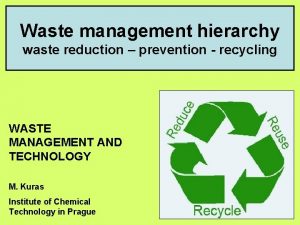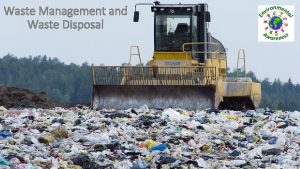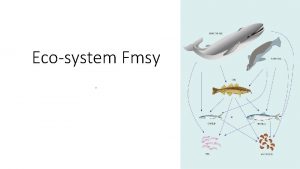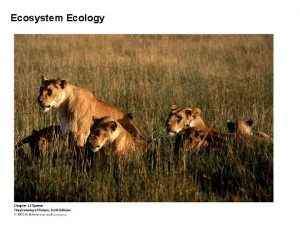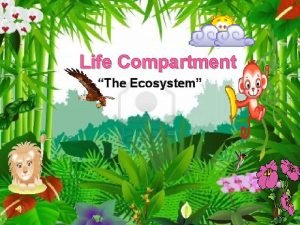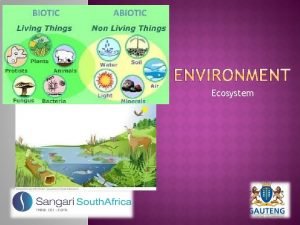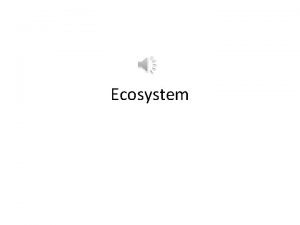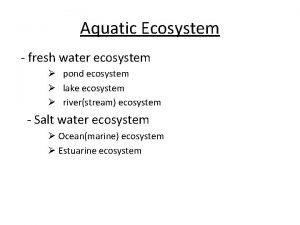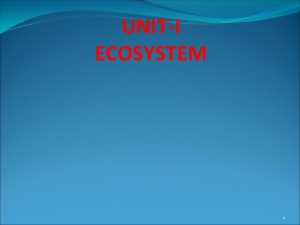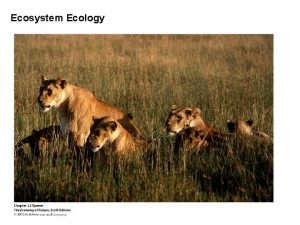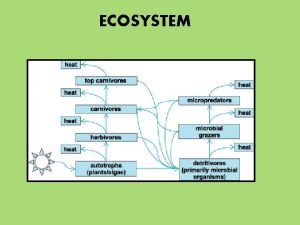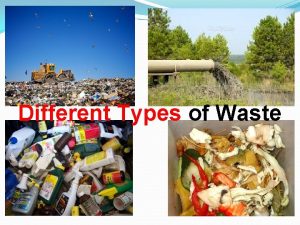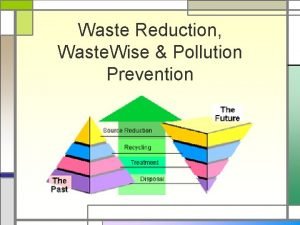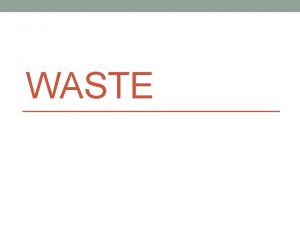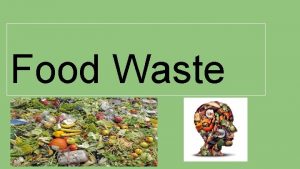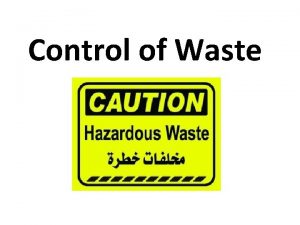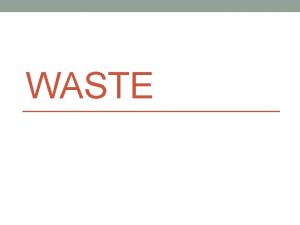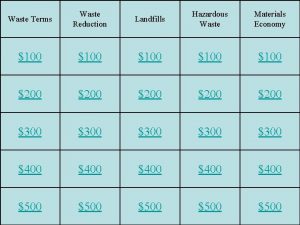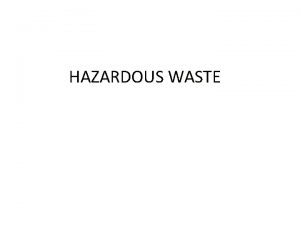Human Impact on an Ecosystem 3 Waste Management


































- Slides: 34

Human Impact on an Ecosystem 3 Waste Management

Need to know • Explain the term waste management • Give an example of waste management in agriculture, aquaculture, fisheries & forestry. • Describe problems associated with waste disposal. • Explain methods of waste minimisation. • Explain the role of microorganisms in waste management. 2

Waste Management What is waste management? Waste management involves strategies for waste preventation and waste minimisation. 3

Disposing of rubbish Traditionally rubbish has been disposed of by: 1. burying it in landfill sites 2. destroying it in incineraters 3. recycling it. 4

Landfills are used to bury rubbish so that it is isolated from groundwater, will be kept dry and will not be in contact with air. This isolation is accomplished with a bottom liner and a covering of soil. 5

6

Learning Check 1 1. What is waste management? 2. How has traditional rubbish been disposed of? 3. What are Landfills? 7

An example of from the following Waste management in: § Agriculture § Fisheries § Forestry 8

1. Waste Management in Agriculture 9

1. Waste Management in Agriculture The main problems are the waste products from farms. The overuse / incorrect use of : 1. chemical fertilisers and 2. animal manure / slurry. 10

Agriculture solution Animal manure / slurry is diluted & then spread on dry land as excess may enter rivers and cause algal blooms and eutrophication. 11

2. Waste Management in Fisheries 12

2. Waste Management in Fisheries Fish processing produces waste e. g. fish heads, tails etc Accumulated fish waste leads to: 1. Unpleasant odours 2. Infestations of rats 3. Maggots 4. Low O 2 levels due to bacterial decomposition of waste. 13

Fishery solution In the fishing industry, the waste parts of the fish are neutralised, pulped, dried and recycled as fertiliser or pig feed. 14

3. Waste Management in Forestry 15

3. Waste Management in Forestry • When trees are harvested only bare poles are removed so alot of tree debris e. g. branches, leaves etc and stumps are left behind. 16

Forestry solution In forestry: 1. any parts of trees not removed from the forest are allowed to decay and return nutrients to the soil. 2. Tree parts are recycled to make sawdust & MDF. 17

Learning Check 2 1. What are the biggest waste management problems in agriculture? 2. How are they being dealt with? 3. What are the biggest waste management problems in fisheries? 4. How are they being dealt with? 5. What are the biggest waste management problems in forestry 6. How are they being dealt with? 18

Important problems in waste disposal

1. wastes may cause disease 2. poisonous chemicals from wastes can enter drinking water supplies or plants 3. waste nutrients can result in eutrophication and the death of aquatic plants and animals 4. landfill sites may be unsightly, smelly and attract undesirable wildlife 5. dumping at sea may lead to pollution of the sea 6. incinerators may release toxic fumes

Role of micro-organisms in Waste Management Micro-organisms (bacteria & fungi) are used to break down 1. waste in sewage treatment plants & produce methane which can be used as a fuel to generate electricity 2. waste in compost heaps to produce humus / fertilisers 3. Oil spills 21

Learning check 5 1. Explain some problems with waste disposal 2. Explain the role of microorganisms in waste management. 22

Methods of waste minimisation The amount of waste we produce can be controlled by the three Rs. 1. Reduce packaging. 2. Reuse as many materials as possible. 3. Recycle as much as possible.

2008 HL Q 10 (c) (i) Waste management is a matter of growing concern in Ireland as the population expands. Outline three problems associated with waste disposal. (ii)Give an example of waste produced in agriculture or fisheries or forestry and describe how it is managed. (iii)Suggest two methods of waste minimisation. (iv)Give one example of the use of microorganisms in waste management. (24) 24

25

26

27

28

29

30

31

32

2008 HL Q 10 (c) (i) disease / pollution / toxins / smell / unsightly / other valid named problem 3(3) (ii) waste described or named matched management described 3, 3 (iii) reduce consumption / reduce packaging / recycle / reuse 2(3) (iv) landfill sites / sewage treatment plants / digesters / compost heaps 3 33

END 34
 Pimfy syndrome
Pimfy syndrome Chapter 11 section 3 water pollution
Chapter 11 section 3 water pollution How do tornadoes affect ecosystems
How do tornadoes affect ecosystems Human movement science impact factor
Human movement science impact factor Schlerophylls
Schlerophylls Human impact on lithosphere
Human impact on lithosphere Human impact on agriculture
Human impact on agriculture Carbon cycle human impact
Carbon cycle human impact Human impact on terrestrial ecosystems
Human impact on terrestrial ecosystems Chapter 27 human impact on earth resources
Chapter 27 human impact on earth resources Chapter 16: human impact on ecosystems answer key
Chapter 16: human impact on ecosystems answer key How are deserts formed
How are deserts formed Chapter 16 human impact on ecosystems
Chapter 16 human impact on ecosystems Human impact on the tundra
Human impact on the tundra Human impact on beaches
Human impact on beaches Human impact on groundwater
Human impact on groundwater Lentic ecosystem
Lentic ecosystem Human impact on oceans
Human impact on oceans Human impact on oceans
Human impact on oceans Medical waste management introduction
Medical waste management introduction Seea in project management
Seea in project management Time management in human resource management
Time management in human resource management Retail org chart
Retail org chart Defintion of hrm
Defintion of hrm Impact 360 workforce management
Impact 360 workforce management What is risk utility in project management
What is risk utility in project management Probability and impact matrix in project management
Probability and impact matrix in project management Tourism interpretation
Tourism interpretation C srinivasan waste management
C srinivasan waste management Recommendation on waste management
Recommendation on waste management Waste management chalmette
Waste management chalmette Universal waste examples
Universal waste examples Bakery waste management
Bakery waste management Solid
Solid Solid
Solid
